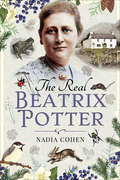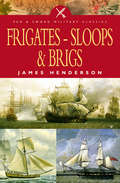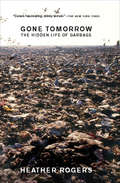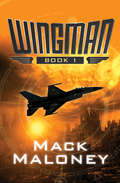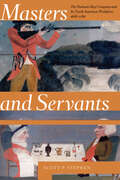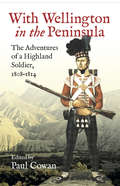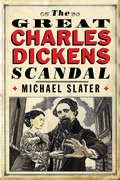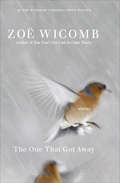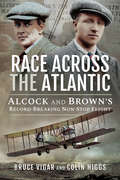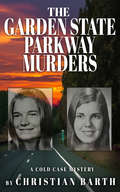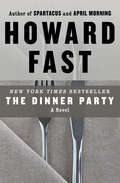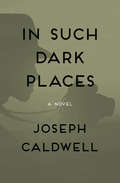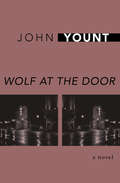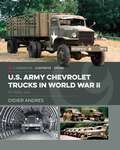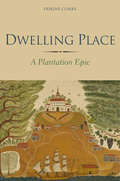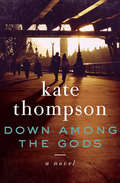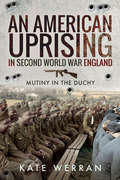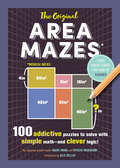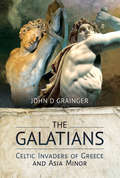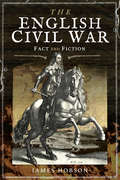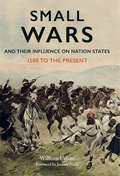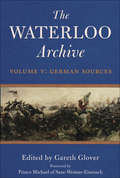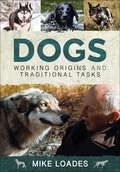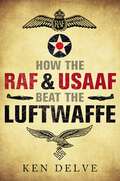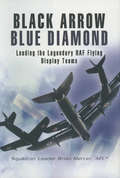- Table View
- List View
The Real Beatrix Potter
by Nadia CohenA revealing and surprising biography of the woman who defied Victorian expectations and gave the world Peter Rabbit. Beatrix Potter&’s children&’s books have enchanted generations of young readers who adored the characters she created as well as her distinctive illustrations. Born into a typically repressed Victorian family, Beatrix was expected to achieve little more than finding herself a rich husband, and thus her parents felt there was no point in bothering to educate her. But the Potters underestimated their daughter. Stifled by the lack of stimulation, she educated herself in art and science, and developed a great love of the natural world. The success of The Tale of Peter Rabbit proved her to be creative genius who could have become the toast of the London literary scene—but when her fiancé tragically died, Beatrix retreated to the Lake District where she reinvented herself as a successful farmer, a canny businesswoman, and an early environmental pioneer. Passionately campaigning to save the area from development, she helped establish the National Trust, and despite her great wealth Beatrix lived out her days in humble anonymity. From a journalist who has authored biographies of Roald Dahl and A.A. Milne, this is an in-depth look at the woman behind the beloved books.
Frigates-Sloops & Brigs (Pen & Sword Military Classics)
by James HendersonAdmiral Nelson's most frequent cry was for more frigates. Though not ships of the line these fast and powerful warships were the 'eyes of the fleet'. They enabled admirals to find where the enemy lay and his likely intentions, as well as patrolling vital trade routes and providing information from far-flung colonies. Together with their smaller cousins, the sloops and brigs of the Royal Navy, they performed a vital function.Generally commanded by ambitious young men, these were the ships that could capture enemy prizes and earn their officers and men enough prize-money to set them up for life. The fictional characters Horatio Hornblower and Jack Aubrey hardly surpassed some of the extraordinary deeds of derring-do and tragedy described in these pages.Originally published in two volumes, this book is a bargain for all who want the factual low-down on the Brylcreem Boys of Nelson's navy.
Gone Tomorrow: The Hidden Life of Garbage
by Heather Rogers&“A galvanizing exposé&” of America&’s trash problem from plastic in the ocean to &“wasteful packaging, bogus recycling, and flawed landfills and incinerators&” (Booklist, starred review). Eat a take-out meal, buy a pair of shoes, or read a newspaper, and you&’re soon faced with a bewildering amount of garbage. The United States is the planet&’s number-one producer of trash. Each American throws out 4.5 pounds daily. But garbage is also a global problem. Today, the Pacific Ocean contains six times more plastic waste than zooplankton. How did we end up with this much rubbish, and where does it all go? Journalist and filmmaker Heather Rogers answers these questions by taking readers on a grisly and fascinating tour through the underworld of garbage. Gone Tomorrow excavates the history of rubbish handling from the nineteenth century to the present, pinpointing the roots of today&’s waste-addicted society. With a &“lively authorial voice,&” Rogers draws connections between modern industrial production, consumer culture, and our throwaway lifestyle (New York Press). She also investigates the politics of recycling and the export of trash to poor countries, while offering a potent argument for change. &“A clear-thinking and peppery writer, Rogers presents a galvanizing exposé of how we became the planet&’s trash monsters. . . . [Gone Tomorrow] details everything that is wrong with today&’s wasteful packaging, bogus recycling, and flawed landfills and incinerators. . . . Rogers exhibits black-belt precision.&” —Booklist, starred review
Wingman: The Tomorrow War (Wingman #1)
by Mack MaloneyThe first book in the bestselling, action-packed Wingman Series: With America in ashes, and lawlessness threatening to rule land, air, and sea, one pilot stands poised to pull his nation back from the brink of all-out anarchy The Big War started in Western Europe with a Soviet nerve gas attack that laid waste to France, Germany, and Spain. The world&’s democracies fought back, and pilots like Hawk Hunter led the charge—tearing across the flaming wreckage of the continent at supersonic speeds. They pushed the Russians back and just when victory was in sight, a traitor at the highest level of government turned off America&’s missile defense system, and Soviet nukes rained from the sky. Two years after the nuclear holocaust, Hunter gets a message to report to his old commander. America is in pieces: Pirates rule the skies, and an airborne armada is plotting to attack Football City (formerly known as St. Louis). The armada is made up of criminals flying state-of-the-art jets, and even though the government can only offer Hunter his old F-16, he will do whatever it takes to reclaim his ravaged homeland. Wingman is the first book of the Wingman series, which also includes The Circle War and The Lucifer Crusade.
Masters and Servants: The Hudson's Bay Company and Its North American Workforce, 1668–1786
by Scott P. Stephen“[Stephen] offers fresh insight into the path a historic fur trading business took to become one of Canada’s most recognizable retailers.” —Literary Review of CanadaIn Masters and Servants, Scott P. Stephen reveals startling truths about Hudson’s Bay Company (HBC) workers. Rather than dedicating themselves body and soul to the Company’s interests, these men were hired like domestic servants, joining a “household” with its attendant norms of duty and loyalty. The household system produced a remarkably stable political-economic entity, connecting early North American resource extraction to larger trends in British imperialism. Through painstaking research, Stephen shines welcome light on the lives of these largely overlooked individuals. An essential book for labor historians, Masters and Servants will appeal to scholars of early modern Britain, the North American fur trade, Western social history, business history, and anyone intrigued by the reach of the HBC.“Blacksmiths, bookkeepers, loggers, tanners, coopers, cooks, sail-makers, interpreters, surveyors, clergy, the list goes on as Stephen marches us through the lives of the early Hudson’s Bay worker.” —The Ormsby Review“Overall, the book reflects the work of a historian comfortable with the hard work of archival research and with an eye for detail and insightful quotations. In many respects, it does for Hudson’s Bay Company employees what Carolyn Podruchny’s Making the Voyageur World did for employees of the Montreal-based fur trade companies in recreating their values, worldview, and distinctive work environment.” —Michael Payne, Prairie History
With Wellington in the Peninsula: The Adventures of a Highland Soldier, 1808–1814
by Paul CowanFew men from the 71st Highland Light Infantry who sailed from Cork with Wellington to Portugal in 1808 returned to the Irish port six years later. The author of Vicissitudes in the Life of a Scottish Soldier was one of the survivors and claims only four other men from his company came through the entire six years with him. As one of Wellington's elite Light Infantry units the 71st were in the fore of the fighting in some of the hardest fought battles of the Peninsular War. The book was controversial on its release in 1827 for its unvarnished and unsentimental account of the grim war against the French in Spain, the Netherlands, Portugal and France itself. A cynic with a highly developed sense of humour, the author was not afraid to criticise his superiors, be they thieving sergeants or officers who were far from gentlemen. Editor Paul Cowan draws on little known diaries and other accounts written by the author's contemporaries to corroborate and expand on this frank but all too long neglected first-hand picture of the war in the Peninsula as it was really fought.
The Great Charles Dickens Scandal
by Michael SlaterThe true story of the sensational rumors surrounding the Victorian author—and the attempts to cover them up: &“Riveting . . . a scholarly detective story&” (The Boston Globe). Charles Dickens was regarded as the great proponent of hearth and home in Victorian Britain, but in 1858 this image was nearly shattered. With the breakup of his marriage that year, rumors of a scandalous relationship he may have conducted with the young actress Ellen &“Nelly&” Ternan flourished. For the remaining twelve years of his life, Dickens managed to contain the gossip. After his death, surviving family members did the same. But when the author&’s last living son died in 1934, there was no one to discourage rampant speculation. Dramatic revelations came from every corner—over Nelly&’s role as Dickens&’s mistress, their clandestine meetings, and even his possibly fathering an illegitimate child. This book presents the most complete account of the scandal and ensuing cover-up ever published. Drawing on the author's letters and other archival sources not previously available, Dickens scholar Michael Slater investigates what Dickens did or may have done, then traces the way the scandal was elaborated over succeeding generations. Slater shows how various writers concocted outlandish yet plausible theories while newspapers and book publishers vied for salacious information. With its tale of intrigue and a cast of well-known figures from Thackeray and Shaw to Orwell and Edmund Wilson, this book will delight not only Dickens fans but anyone who appreciate tales of mystery, cover-up, and clever detection. &“Slater&’s work is a fascinating investigation into the nature of scandal itself as much as it is a look at the particular episode.&” —TheDaily Beast
The One That Got Away: Stories
by Zoë WicombThese short stories from the award-winning South African author &“combine the coolly interrogative gaze of the outsider with an insider&’s intimate warmth&” (J. M. Coetzee). Zoë Wicomb&’s debut short story collection, You Can&’t Get Lost in Cape Town, won critical acclaim across the globe as well as high praise from fellow authors including Toni Morrison, J. M. Coetzee, Bharati Mukherjee, and Gayatri Chakravorty Spivak. Now, after two novels, Wicomb returns to the genre that first brought her international acclaim. Set mostly in the South African city of Cape Town, where Wicomb is from, and the Scottish city of Glasgow, where she now lives, this new collection of short stories straddles two worlds. With an array of expertly drawn characters, these twelve tales explore a range of human relationships: marriage, friendship, family, and the fraught yet often intimate relations between those who serve and those who are served. Full of ironic twists, ambiguities, and moments of startling insight, The One That Got Away showcases this Windham Campbell Award–winning author at the height of her powers. &“An extraordinary writer . . . seductive, brilliant, and precious, her talent glitters.&” —Toni Morrison
Race Across the Atlantic: Alcock and Brown's Record-Breaking Non-Stop Flight
by Colin Higgs Bruce Vigar&“Reveals their race across the Atlantic in stunning pictures . . . includes a first-hand account from Captain Brown of his world-first flight.&” —Daily Mail Online It was Tuesday, 15 July 1919 and for the residents of Clifden on Ireland&’s west coast this was not to be a normal day. Just before 08.40 hours, descending out of the gloom, came a large, twin-engine airplane lining up for final approach. After a flight lasting 16 hours and 28 minutes, Captain John Alcock and Lieutenant Arthur Whitten-Brown had won the race to be the first to fly nonstop across the Atlantic—and the prize of £10,000, roughly equivalent to $1,000,000 in today&’s money, offered by Lord Rothermere, aviation philanthropist and owner of the Daily Mail. Illustrated by many unique photographs this book tells the story of the race, delayed for almost six years by the First World War. Many aircraft would be entered but few would even get off the ground. The teams faced great difficulties in preparing for the challenge of crossing one of the most hostile stretches of ocean on Earth. The authors not only reveal tales of failures and technical difficulties, but of the intense frustration of waiting for the perfect weather-window. And even when finally airborne, Alcock and Brown&’s flight almost ended in disaster on several occasions as weather conditions almost conspired to cast them down into the grey, cold waters of the Atlantic and almost certain death. &“Right from the first page, you&’ll be hooked . . . you&’re in the cockpit with Alcock and Brown and every dump and dive of the flight across the Atlantic.&” —Vintage Airfix
The Garden State Parkway Murders: A Cold Case Mystery
by Christian BarthAttorney and true crime writer examines the unsolved 1969 murders of two female college students whose bodies were left off the Garden State Parkway.In the early hours of May 30, 1969, the brutally stabbed bodies of two nineteen-year-old friends, Elizbeth Perry and Susan Davis, were dumped near Ocean City, New Jersey. This is the story of their case.Among the numerous suspects author and attorney Christian Barth identifies are infamous serial killers Ted Bundy and Gerald Eugene Stano, who were living within an hour&’s drive from the murder scene. The killers also resided next to one another on Florida&’s Death Row, and indirectly confessed to the double homicide.A culmination of more than nine years of research, Barth&’s book is compiled from multiple sources, including interviews with retired New Jersey State Police detectives, law enforcement officials from other jurisdictions, federal agents, possible witnesses, victim family members, as well as information gathered from FBI case files, letters, journals, libraries, newspaper articles, and university archives.In scintillating detail, Barth presents the case, including previously undisclosed information surrounding these brutal murders, as well as an examination of recent technological advancements in crime scene analysis and FBI serial killer profiling that could help identify the killer. When all is said and done, the reader is asked to consider: Why hasn&’t this cold case been solved? &“The definitive book on the case of the coeds murdered on the Garden State Parkway…Barth has done a remarkable job of gathering all of the information and putting it into a readable narrative.&”—William Kelley, Jersey Shore Nightbeat
The Dinner Party: A Novel
by Howard FastHoward Fast&’s 1987 New York Times bestseller, a tight political drama that remains just as relevant today as when it was first writtenFast&’s 1987 novel The Dinner Party confronts issues including American intervention in Latin America and the AIDS epidemic. Often compared to a play, The Dinner Party takes place during a single day, culminating in a party hosted by Richard Cromwell, a US Senator whose wealthy entrepreneur father-in-law is building a controversial highway across Central America, though powerful government interests want the highway stopped stopped. International politics become deeply personal in this novel, and unfailingly serve as a commentary on contemporary politics. This ebook features an illustrated biography of Howard Fast including rare photos from the author&’s estate.
In Such Dark Places: A Novel
by Joseph CaldwellWhen a photographer witnesses a violent crime in New York&’s Lower East Side, he hunts down the missing camera that may hold answersEugene is a midwesterner living in New York, an erstwhile Catholic and not-quite-openly-gay photographer. When a Holy Week pageant in the gritty Lower East Side erupts into a riot, he is sucked into the city&’s shadowy depths. While photographing the parade, Eugene has his eye on a handsome teen, but when things turn violent the youth is stabbed and Eugene&’s camera is stolen. To find the camera and its precious film, which may provide evidence, Eugene has to become acquainted with a seedy, unfamiliar world, and hold on to his sanity in the process. In Such Dark Places is a thrilling debut novel of awakening and obsession.
Wolf at the Door: A Novel
by John YountThe stunning debut of a writer hailed by Robert Penn Warren as &“that very rare thing, the born novelist&”He had lost the thread of his life, and he couldn&’t pretend any longer that he hadn&’t. As soon as Thomas Rapidan thinks it, he knows it is true. The question is, what to do about it? John Yount&’s slim, potent first novel is the story of a troubled young man deciding whether to live or die. Tom&’s wife, Maggie, knows that he does not love her. She pays his tuition at the North Carolina university they attend together, but he shows no interest in her or in his classes—only in drinking himself into a stupor and reminiscing about his poor West Virginia upbringing and his violent father. When Tom puts Maggie on a plane home to visit her parents, he is free to indulge his darkest, most cynical desires. He gets drunk, picks a fight in a bar, and edges closer and closer to the abyss. But before he can take the final step, Tom meets a remarkable girl in an unlikely place and discovers that she just might be able to give him the one thing no one else can—forgiveness.
U.S. Army Chevrolet Trucks in World War II (Casemate Illustrated Special)
by Didier AndresA detailed, pictorial history of the 1 1/2-ton Chevy truck and its use by the U.S. Army during World War II.From 1940 to 1945, large numbers of trucks of all categories were delivered to the U.S. Army by the Chevrolet Motor Division of General Motors. Over 160,000 of these trucks were G-506 light four-wheel-drive trucks—which became the standard 1 1/2-ton, 4x4 truck for both the U.S. Army and Army Air Corps during the war. In addition, many more thousands were delivered to Allied forces as part of the Lend-Lease program, including nearly 50,000 delivered to the Soviet Union. Tough, well-built, and more agile than the deuce and a half, the Chevy 1½ ton played a part in every theater of operations during the war. Its durability and mechanical reliability made it ideal for a wide range of missions. Not for nothing did Chevy advertise the trucks during the war as “Vehicles of Victory.”More than 75 years after it was designed, the small Chevrolet truck is still a favorite with collectors. This fully illustrated book details the different series of trucks and their many uses within the U.S. Army including cargo trucks, panel delivery trucks for the Signal Corps, dump trucks for engineers, telephone trucks, tractors, and bomb service trucks for the air force. It also covers their part in the Lend-Lease program, and their continued use after the war.
Dwelling Place: A Plantation Epic
by Erskine ClarkeWinner of the Bancroft Prize. &“[A] beautifully conceived and penetrating book . . . one of the finest studies of American slavery ever written.&”—The New Republic Published some thirty years ago, Robert Manson Myers&’s Children of Pride: The True Story of Georgia and the Civil War won the National Book Award in history and went on to become a classic reference on America&’s slaveholding South. That book presented the letters of the prominent Presbyterian minister and plantation patriarch Charles Colcock Jones (1804–1863), whose family owned more than one hundred slaves. While extensive, these letters can provide only one part of the story of the Jones family plantations in coastal Georgia. In this remarkable new book, the religious historian Erskine Clarke completes the story, offering a narrative history of four generations of the plantations&’ inhabitants, white and black. Encompassing the years 1805 to 1869, Dwelling Place: A Plantation Epic describes the simultaneous but vastly different experiences of slave and slave owner. This &“upstairsdownstairs&” history reveals in detail how the benevolent impulses of Jones and his family became ideological supports for deep oppression, and how the slave Lizzy Jones and members of her family struggled against that oppression. Through letters, plantation and church records, court documents, slave narratives, archaeological findings, and the memory of the African American community, Clarke brings to light the long-suppressed history of the slaves of the Jones plantations—a history inseparably bound to that of their white owners. &“Clarke&’s magisterial, multiperspective study of the antebellum South describes two family groups . . . a &‘total&’ history of interconnected people divided by race, legal status, and gender.&”—Choice
Down Among the Gods: A Novel
by Kate ThompsonThe Greek god Hermes narrates this extraordinary novel of contemporary romance by award-winning author Kate Thompson &“I have a story for you . . . It is a tale of immortals, acted by mortals.&” So begins this story of two lonely people who meet at an adult education class. Jessie Parker has just turned forty. Between the recent death of her mother and the local library&’s burning down, she feels bereft and adrift. Patrick Robinson, a journalist with artistic tendencies, is also searching for something. With the gods looking down upon them, Jessie and Patrick begin dating. Soon, they find themselves deeply in love, but caught up in the struggles that plague all relationships. Told from the perspective of the immortal Hermes, Down Among the Gods is a riff on the modern romance. By turns funny and moving, this remarkable novel lays bare the intimate yearnings of those who quest after love everlasting—whether on Olympus or right here on Earth.
An American Uprising in Second World War England: Mutiny in the Duchy
by Kate WerranThe shocking story of a WWII shootout between black and white GIs in a quiet Cornish town that put the British-US “special relationship” on trial.On September 26, 1943, racial tensions between American soldiers stationed in Cornwall erupted in gunfire. Labelled a ‘wild west’ mutiny by the tabloids, it became front page news in Great Britain and the USA. For Americans, it bolstered a fast-accelerating civil rights movement, while in the UK, it exposed unsettling truths about Anglo-American relations. With new archival research, journalist Kate Werran pieces together the shocking drama that authorities tried to hush up. Her narrative examines everything from the controversy of American segregation on British soil to the shocking event itself and the resulting court martial.Extracted from wartime cabinet documents, secret government surveys, opinion polls, diaries, letters and newspapers as well as testimony from those who remember it, this story offers a rare window into a little-known dark side of the ‘American Invasion.’
The Original Area Mazes: 100 Addictive Puzzles to Solve with Simple Math—and Clever Logic! (Original Area Mazes)
by Naoki Inaba Ryoichi MurakamiPerfect for sudoku fans—the rules for these 100 logic puzzles are simple, and the math is easy. But the puzzles get harder and harder! Once you match wits with area mazes, you&’ll be hooked! Your quest is to navigate a network of rectangles to find a missing value.Just Remember:Area = length × widthUse spatial reasoning to find helpful relationshipsWhole numbers are all you need. You can always get the answer without using fractions! Originally invented for gifted students, area mazes (menseki meiro), have taken all of Japan by storm. Are you a sudoku fanatic? Do you play brain games to stay sharp? Did you love geometry . . . or would you like to finally show it who&’s boss? Feed your brain some area mazes—they could be just what you&’re craving!
The Galatians: Celtic Invaders of Greece and Asia Minor
by John D. GraingerA historian of the ancient world examines the epic rise and fall of the Celtic tribes who invaded the Mediterranean and lands further east.The eastern Celtic tribes, known to the Greeks as Galatians, exploited the waning of Macedonian power after Alexander the Great’s death to launch increasingly ambitious raids and expeditions into the Balkans. In 279 BC they launched a major invasion, defeating and beheading the Macedonian king, Ptolemy Keraunos, before sacking the Greeks’ most sacred oracle at Delphi. Eventually forced to withdraw northwards, they were defeated by Antigonus Gonatus at Lysimachia in 277 BC but remained a threat.A large Galatian contingent was invited to cross to Asia to intervene in a war in Bithynia but they went on to seize much of central Anatolia for themselves, founding the state of Galatia. They remained a force in the region and their warriors served as mercenaries in many armies throughout the eastern Mediterranean. In this authoritative history, John Grainger explores the fortunes of these eastern Celts down to their eventual subjugation by the Romans, Galatia becoming a Roman province in 30 BC.
The English Civil War: Fact and Fiction
by James HobsonFascinating facts and debunked myths about Catholic vs. Protestant, King vs. Parliament, England vs. Scotland, Cromwell vs. Ireland, and more. What was life like during the English Civil War? Did the war really split families apart? Was Charles I just too stupid to be king? Did Cromwell really hate the monarchy and did Parliament actually ban Christmas? In this witty, straightforward book you&’ll find fast and clearly written answers to all your questions about this remarkable period of British history in which conflicts raged over who should govern England, Ireland, and Scotland—and exactly how they should go about it. Find out about people&’s everyday lives, how they thought and behaved, and how the Civil War affected them. Learn about the role of women and whether they merely stayed at home and suffered, and if Cromwell really was always miserable. Bringing to life the tumultuous, unprecedented period of history that is known as the English Civil War, each chapter of this book, from the author of Dark Days of Georgian Britain: Rethinking the Regency, presents a controversy in itself and sets about dispelling commonly held myths, allowing us to more fully understand the time and place where these world-changing events came to pass.
Small Wars and Their Influence on Nation States: 1500 to the Present
by William UrbanAfter 1500, European warfare was repeatedly revolutionized by new weapons, new methods for supplying armies in the field, improved fortifications and new tactics for taking fortifications. This allowed empires to grow, with, for example, the Ottomans expanding into the Middle East and Africa, Britain dominating India, and Russia conquering the steppe.The dynamics of resistance to this expansion were remarkably similar to what we see today in ISIS, Afghan and Pakistani Talibans, and various jihadist groups that are more tribal than Islamist. The driving force behind these organizations may be tribal resentment of the modern world undermining long-established traditions and beliefs. Religion or their interpretation of Islam is merely a glue that holds the rebels together.Such resistance continues to be met by world powers who misunderstand the motives of the people that take up arms against them, and we should understand that ours is not the first generation to deal with this problem, and ours will probably not be the last. However, there are some methods that work better than others. The failures and successes of the past can help us now and in the future.
The Waterloo Archive Volume V: German Sources (The Waterloo Archive #5)
by Prince Michael of Saxe-Weimar-EisenachThe British archives of the Napoleonic wars are unique, brimming with personal letters to family and friends or journals that record their innermost thoughts. The human aspect of war comes to the fore, the humor and exhilaration; the fears and miseries; the starvation and exhaustion; the horror and the joy.It is usually accepted that very few common soldiers of this period could read or write and that the few letters and journals that do exist emanate from more senior officers, who were required to be able to write to perform their duties. Volume I proved this to be a fallacy, and this volume continues with a further three accounts, and shows how the ordinary soldier saw things, giving a different aspect to our studies. Also included:* The poignant final letters of older family men such as Major Arthur Heyland, jar noticeably with the bawdy and carefree scribbles of youth by such as Ensign Kinchant (including describing his visits to bordellos) who also lost his life that day. * A long series of letters by Lieutenant Frederick Johnston of the 6th Inniskillings and of Lieutenant George Blathwayt of the 23rd Light dragoons sheds important light on cavalry regiments who have few previously published memoirs. * A very interesting letter by Second Lieutenant Richard Cocks Eyre of the 2nd Battalion 95th Rifles makes a mockery of the myth that British troops did not openly plunder the local farmhouses before the battle for food and fuel to burn. *A letter by a civilian visitor to the area six weeks after the battle ends this volume, which will engage and fascinate the reader.
Dogs: Working Origins and Traditional Tasks
by Mike LoadesA walk through history with man’s best friend, with stops in Alaska, the Middle East, and beyond—includes over 250 photos of canines at work.Handle various dogs engaged in their traditional tasks, Mike Loades takes us on his adventures in the Jordanian desert, where he shares the saddle of his camel with a Saluki, and in the green hills of Wales, where he works cattle with a Corgi. He mushes Huskies in Alaska, drives carriages with Dalmatians, and flies falcons with Spaniels. Each encounter not only highlights the bond between humans and dogs, it also frames that connection in its historical context. Different types of dogs appear the way they do because, at some stage in their development, they were bred selectively for a specialist job. The author takes key types on a walk through history. Along the way he explores the methods and practices of their original occupations. He delves into when, where, and why they were first bred as the types we recognize today. This fascinating and engaging book includes over 250 stunning color photographs of dogs in action, resulting in an illuminating journey through many cultures and time periods—and a personal, heartfelt tribute to the enduring partnership between humans and dogs.
How the RAF & USAAF Beat the Luftwaffe
by Ken Delve"The Luftwaffe had to be used in a decisive way in the Battle of Britain as a means of conducting total air war. Its size, technical equipment and the means at its disposal precluded the Luftwaffe from fulfilling this mission." - Adolf Galland How did the RAF beat the Luftwaffe during the Second World War? Was it actually the fact that they did not lose which later enabled them to claim victory – a victory that would have been impossible without the participation of the Americans from early 1943? This groundbreaking study looks at the main campaigns in which the RAF – and later the Allies – faced the Luftwaffe. Critically acclaimed writer Ken Delve argues that by the latter part of 1942 the Luftwaffe was no longer a decisive strategic or even tactical weapon. The Luftwaffe was remarkably resilient, but it was on a continual slide to ultimate destruction. Its demise is deconstructed according to defective strategic planning from the inception of the Luftwaffe; its failure to provide decisive results over Britain in 1940 and over the Mediterranean and Desert in 1941–1942; and its failure to defend the Reich and the occupied countries against the RAF and, later, combined Allied bomber offensive. Delve studies numerous aspects to these failures, from equipment (aircraft and weapons) to tactics, leadership (political and military), logistics, morale and others.
Black Arrow Blue Diamond: Leading the Legendary RAF Flying Display Teams
by Brian MercerA memoir of flying Hawker Hunters for the famed aerobatic display teams, and other adventures in aviation. Brian Mercer is one of the most outstanding postwar RAF fighter pilots and in this eminently readable autobiography he recaptures life as it was in the days of transition from flying piston-powered aircraft to jet power. His flying and leadership skills resulted in a long association with what was then considered the finest aerobatic display team in the world—Treble One Squadron&’s Black Arrows. Flying the elegant black Hawker Hunters in large formation displays was no easy task, and Mercer explains in great detail how their legendary precision was achieved, revealing many exciting incidents en route. When Treble One&’s Hunters were replaced with the supersonic Lightning fighter, it soon became clear that these superfast aircraft were not suited to close-up display flying. Brian was then asked to form a new RAF display team and continue with Hunters. This was to become the No. 92 Squadron&’s Blue Diamonds, who inherited the star role. Faced with the fact that future promotion within the RAF would move him from cockpit to desk, Brian elected to join the then-fledgling airline Cathay Pacific, and his story also includes many lively accounts of incidents that occurred while he was flying from the company&’s home base at Kai Tak in Hong Kong.
